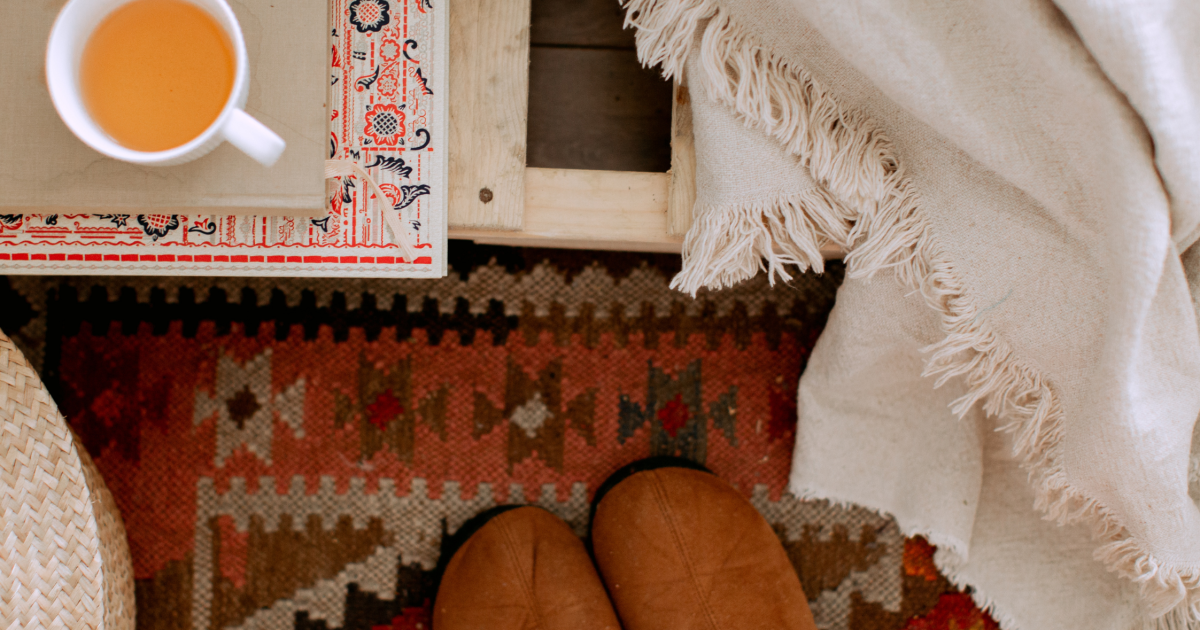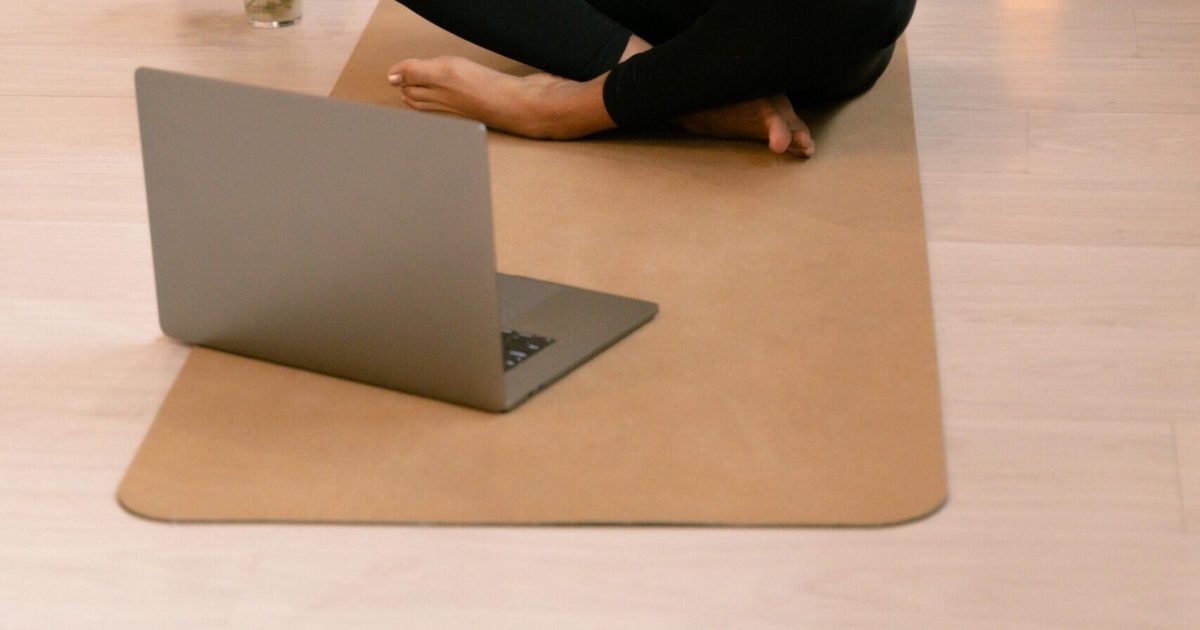The winter months can feel like an endless loop of dark mornings, chilly evenings, and the constant battle between wanting to hibernate and needing to function. If you’re finding your usual self-care routine falling flat during winter, just know we are all in this together. While Instagram might suggest that perfect winter wellness involves 5 AM meditation sessions and ice-cold plunges, I’m here to share something different: a realistic approach to winter self-care that actually works with your life, not against it.
Table of Contents
Why Winter Self-Care Hits Different

We all know, winter changes everything. Those early morning runs that felt amazing in summer? Not so appealing when it’s pitch dark and freezing outside. Your usual routines need a seasonal update, and that’s completely normal.
The shorter days affect us more than we realize. Our bodies produce more melatonin (the sleep hormone) in response to darkness, which explains why you might feel ready for bed at 7 PM. Meanwhile, reduced sunlight exposure can lower serotonin levels, impacting our mood and energy levels.
The cold weather doesn’t just change our outdoor plans; it fundamentally shifts how we live. We spend more time indoors, move less, and often find ourselves falling into what I like to call the “winter slump” – that feeling of being simultaneously restless and lethargic.
Common winter wellness challenges we all face include:
- Disrupted sleep patterns due to less natural light exposure
- Reduced motivation for physical activity
- Feelings of isolation and disconnection
- Changes in eating habits and cravings
- Dry skin and other cold-weather physical discomforts
The Right Tools for Winter Wellness
Before diving into specific routines, let’s talk about the tools that can make winter self-care significantly easier. While NONE of these are absolutely necessary, they can make a noticeable difference in your winter wellness journey:
Light Therapy Essentials:
- A high-quality SAD lamp (look for one providing 10,000 lux)
- Sunrise alarm clock for gentler wake-ups
- Light-filtering curtains that let in natural daylight
Comfort and Warmth Must-Haves:
- A supportive humidifier to combat dry winter air
- Cozy, breathable bedding (think layered approach)
- Thermal workout gear for indoor-outdoor transitions
Wellness Tracking Tools:
- A user-friendly mood tracking app
- Simple journal for wellness notes
Creating Your Winter Morning Routine (That You'll Actually Follow)
The key to a successful winter morning routine isn’t forcing yourself into an Instagram-perfect schedule – it’s about working with your body’s natural rhythms while gently encouraging yourself to start the day well.
Gentle Wake-Up Strategies That Work
Instead of shocking your system with an abrupt alarm, consider investing in a sunrise alarm clock. These gradually brighten your room over 30 minutes before your wake time, mimicking natural sunrise. Your body responds to this subtle light change by reducing melatonin production, making the wake-up process significantly more pleasant. If a sunrise alarm isn’t in your budget, try placing your regular lamp on a timer to turn on 15 minutes before your alarm. The principle is the same – light exposure helps ease your body into wakefulness.
Making Light Therapy Work for You
Light therapy can be a game-changer during winter months, but it doesn’t have to mean sitting statically in front of a lamp for hours. Place a light therapy lamp on your desk while you enjoy your morning coffee, or position it near your makeup mirror while getting ready. The key is incorporating it naturally into your existing routine. A good light therapy session should last about 20-30 minutes, with the lamp positioned at arm’s length and slightly above eye level. Look for a lamp that provides 10,000 lux of light for maximum benefit.
Warming Up Your Body and Mind
Winter mornings call for gentle movement that honors your body’s need to warm up slowly. Try this simple sequence:
- Start with 2-3 minutes of gentle stretching in bed
- Move to some basic joint rotations
- Add in some light yoga or mobility work while waiting for your breakfast
Speaking of breakfast, winter mornings deserve something warming and nourishing. Consider preparing overnight oats that you can heat up, topped with warming spices like cinnamon and nutmeg. Add some protein (think nuts or chia seeds) to keep you satisfied longer.
Indoor Physical Wellness That Doesn't Feel Like a Chore

The secret to staying active during winter isn’t forcing yourself to brave the elements – it’s finding indoor movement that actually feels good.
Reimagining Home Workouts
Forget the idea that home workouts need to be intense HIIT sessions or nothing at all. Think of exercise as movement “snacking” – little bursts of activity that add up throughout your day. Create a menu of movement that match different energy levels:
High Energy Days:
- Jump rope intervals (surprisingly effective even for 10 minutes)
- Bodyweight strength circuits
Low Energy Days:
- Gentle yoga flows
- Walking in place while watching your favorite show
- Basic stretching sequences.
Pro tip: If you’re struggling to get moving, check out my guide on 13 Effortless Ways to Add Physical Activity in Your Day. It’s packed with sneaky strategies that’ll have you moving more without even realizing you’re exercising.
Winter Workout Survival Kit for Home (OPTIONAL):
- Resistance bands (lightweight, versatile, store anywhere)
- Yoga mat (your personal movement zone)
- Comfortable, layerable workout clothes
- Water bottle to keep hydrated
Nurturing Mental Health During Dark Days

Winter blues are real, and they require real strategies – not just “think positive” platitudes. The key is building a toolkit of practical techniques you can turn to when needed.
Light Exposure: Making the Most of Limited Daylight
While it might feel counterintuitive when it’s cold outside, getting natural light exposure during winter is crucial. Try to:
- Take a 10-minute walk during your lunch break
- Position your work station near a window
- Bundle up for a quick morning coffee on your balcony or porch
Mood Management That Makes Sense
Winter’s emotional landscape can feel like navigating a complex maze. Your feelings aren’t a problem to fix, but signals to understand. Sometimes, managing your mental health is less about forcing positivity and more about creating space for genuine emotional processing.
Quick mood management strategies:
- Use a simple mood tracking app
- Practice 5-minute daily meditation
- Create a “feels” journal
- Set realistic emotional boundaries
- Connect with supportive people
Curious about making mental health a true daily priority? I dive deep into this in my comprehensive guide: 10 Powerful Ways to Make Mental Health a Priority in Your Daily Life. It’s your blueprint for sustainable emotional wellness.
Rather than fighting winter emotions, work on understanding them. The least you can do is to just start a simple mood tracking practice – nothing elaborate, just a quick daily note about how you’re feeling and what might have influenced it. This awareness helps you respond more effectively to emotional dips.
Evening Rituals for Better Winter Nights

Your evening routine sets the stage for both restful sleep and a better tomorrow. The key is creating a warm-down sequence that feels nurturing rather than restrictive.
Creating Your Cozy Evening Sequence
Think of your evening routine as gradually dimming the lights on your day. Start by:
- Setting a “wind-down” alarm about an hour before bedtime
- Reducing harsh overhead lighting in favor of softer lamps
- Switching to calming activities like reading, gentle stretching, or journaling
Winter Sleep Hygiene That Works
While standard sleep hygiene advice is helpful year-round, winter calls for some seasonal adjustments:
- Keep your bedroom cool but not cold (around 65°F/18°C is ideal)
- Use flannel sheets and layer blankets so you can adjust as needed
- Consider a humidifier to combat dry winter air
Weekend Winter Wellness That Feels Like Self-Care

Weekends aren’t just days off – they’re your reset button. Winter weekends offer a unique opportunity to recharge, realign, and set yourself up for success. Want to transform your weekends from random downtime to intentional self-care? Check out my Sunday Reset Routine Checklist: How to Plan a Productive Week + Free Template for a game-changing approach. But let’s get into basics here:
Indoor Activities That Feed Your Soul
Develop a rotating menu of indoor activities that actually interest you. This might include:
- Learning a new craft (knitting, painting, baking)
- Creating a home spa experience with simple DIY treatments
- Starting an indoor herb garden
- Hosting cozy movie afternoons with friends
Batch Cooking as Self-Care
Transform meal prep from a chore into a nurturing activity. Put on your favorite playlist or podcast and spend a few hours creating warming soups, stews, and casseroles. Not only does this provide nourishing meals for the week ahead, but the process itself can be surprisingly meditative.
Making Your Routine Stick (Without Being Rigid)

The key to maintaining any routine is flexibility. Your winter self-care practice should bend with your needs rather than break under pressure.
Practical Habit-Building Approaches
Instead of trying to overhaul everything at once, use habit stacking – attach new habits to existing ones. For example:
- Add a one-minute breathing exercise to your morning coffee routine
- Do light stretches while waiting for your shower to warm up
- Practice gratitude while applying your evening moisturizer
Troubleshooting Common Challenges
Remember that consistency doesn’t mean perfection. Have backup plans for common winter wellness obstacles:
- Can’t get outside? Have indoor movement videos ready
- Feeling isolated? Schedule regular virtual coffee dates
- Low energy? Keep a list of “low power mode” self-care activities
Final Thoughts
Creating a winter self-care routine isn’t about following someone else’s perfect plan – it’s about building practices that work for your life, energy levels, and preferences. Start small, stay flexible, and remember that any step toward self-care counts, no matter how tiny it might seem.
Quick Start Guide:
- Choose one morning, one daytime, and one evening practice to start with
- Track what works and what doesn’t for two weeks
- Adjust based on your observations
- Gradually add new elements as previous ones become habitual
Remember, the best winter self-care routine is one that you’ll actually do. Start today by choosing just one element from this guide and implementing it in a way that feels manageable for you. Your future self will thank you.
What’s your favorite winter self-care practice? Share in the comments below and let’s build a community of realistic winter wellness together!
FAQs:
Why is self-care especially important in winter?
Shorter days, reduced sunlight exposure, and cold temperatures can affect our mood, energy levels, and immune system. Regular self-care practices help counteract these effects and maintain both physical and mental health.
What exactly is winter stress?
It’s s a combination of physical and emotional challenges that occur during the cold season. It can include: Seasonal Affective Disorder (SAD) symptoms, holiday-related anxiety, social isolation due to reduced outdoor activities, and disrupted routines and exercise habits.
Why do we feel more tired and lazy during winter?
Shorter daylight hours affect your body’s production of melatonin (the sleep hormone) and serotonin (the “feel-good” hormone). Body’s natural response to reduced sunlight can make you feel more tired and less motivated.
How can I maintain good mental health during winter?
Get regular exposure to natural daylight, especially in the morning. Stay physically active, even if it’s gentle indoor movement. Maintain social connections, whether in-person or virtual.
What’s the right way to do light therapy?
Using a lamp that provides 10,000 lux of light, having your session in the morning (ideally within 1 hour of waking), and spending 20-30 minutes with the light while doing other activities.
How can I naturally boost my mood during winter?
Regular physical activity to boost endorphins, exposure to natural daylight when possible, maintaining a nutrient-rich diet with vitamin D-rich foods, staying hydrated, maintaining social connections, and quality sleep.
